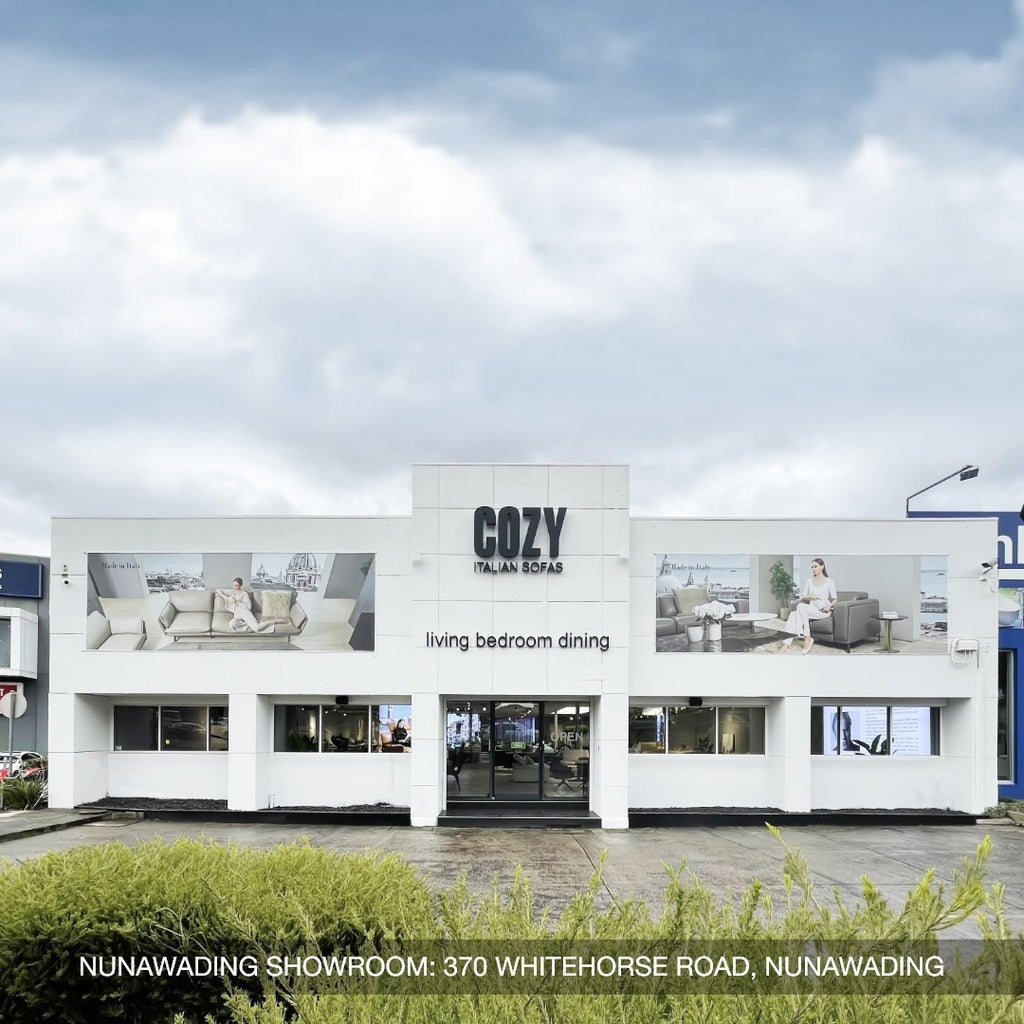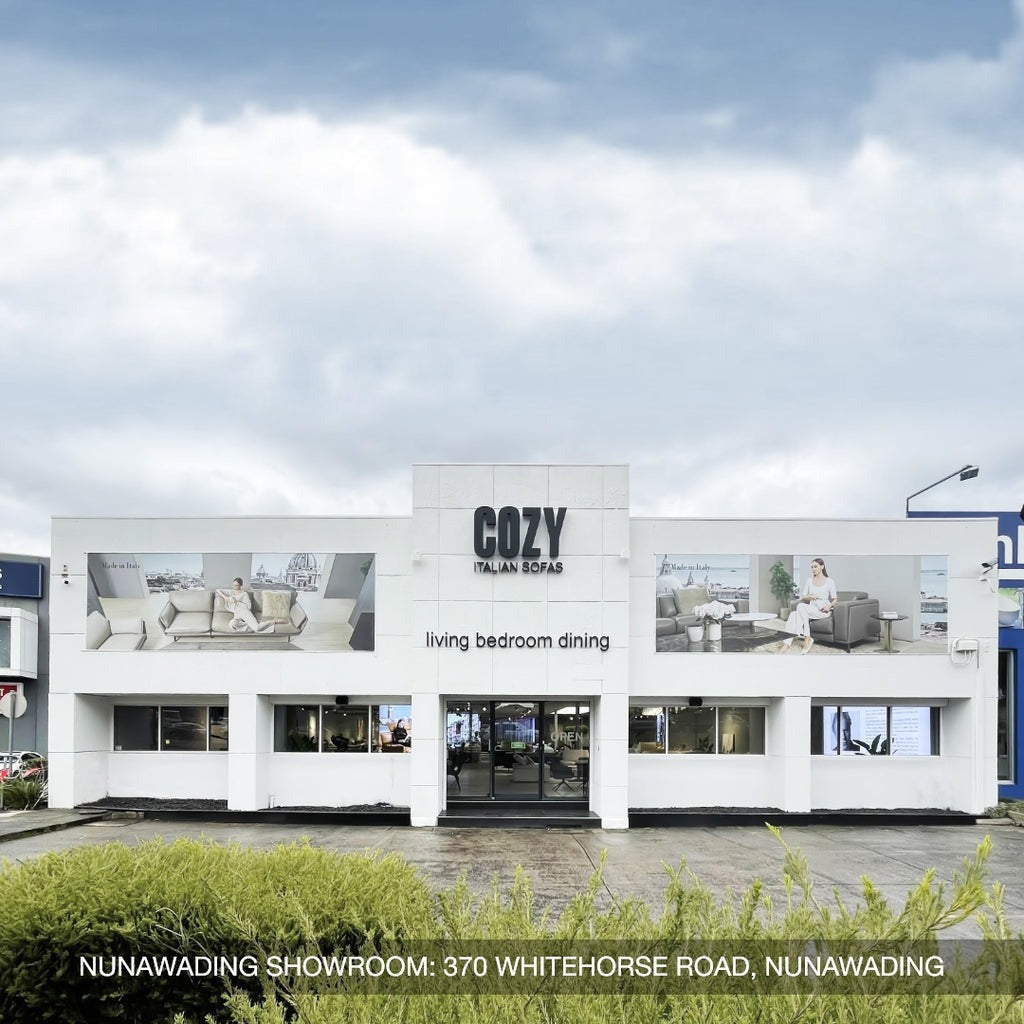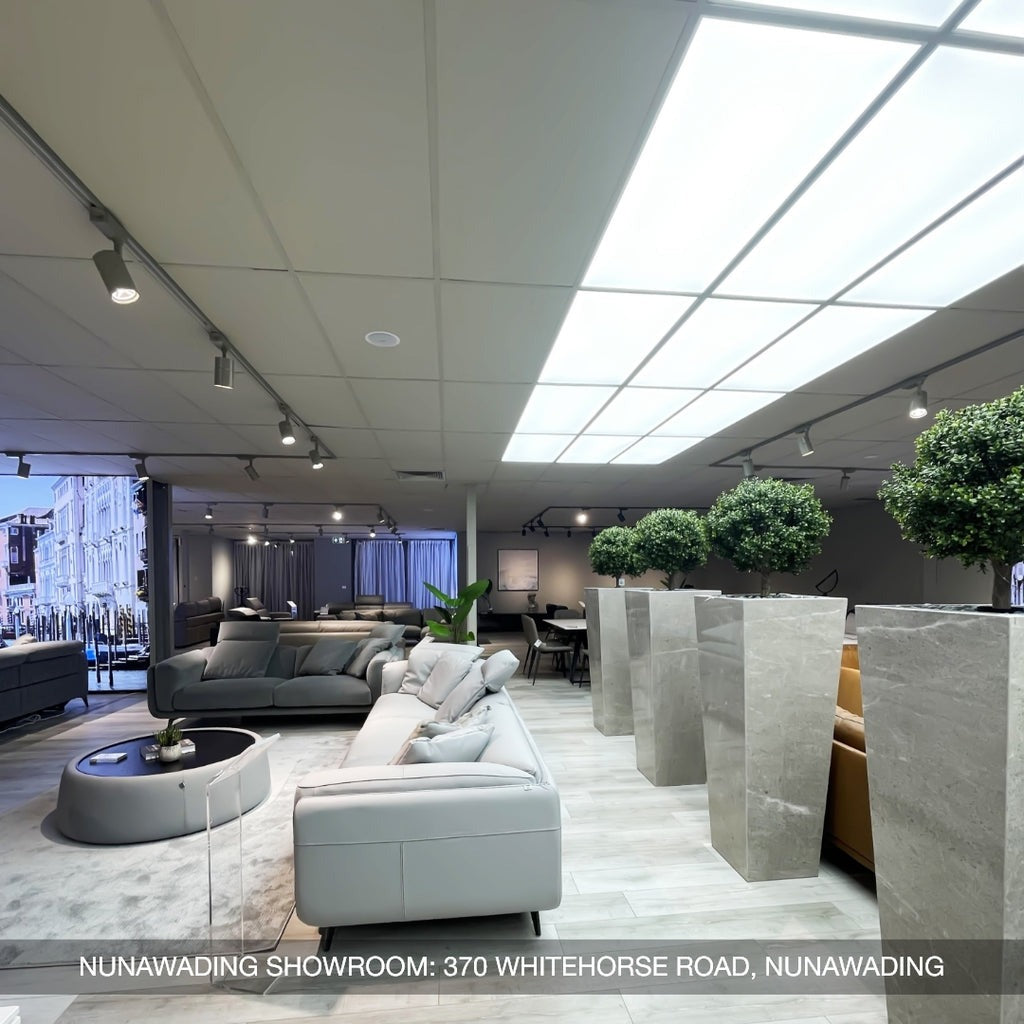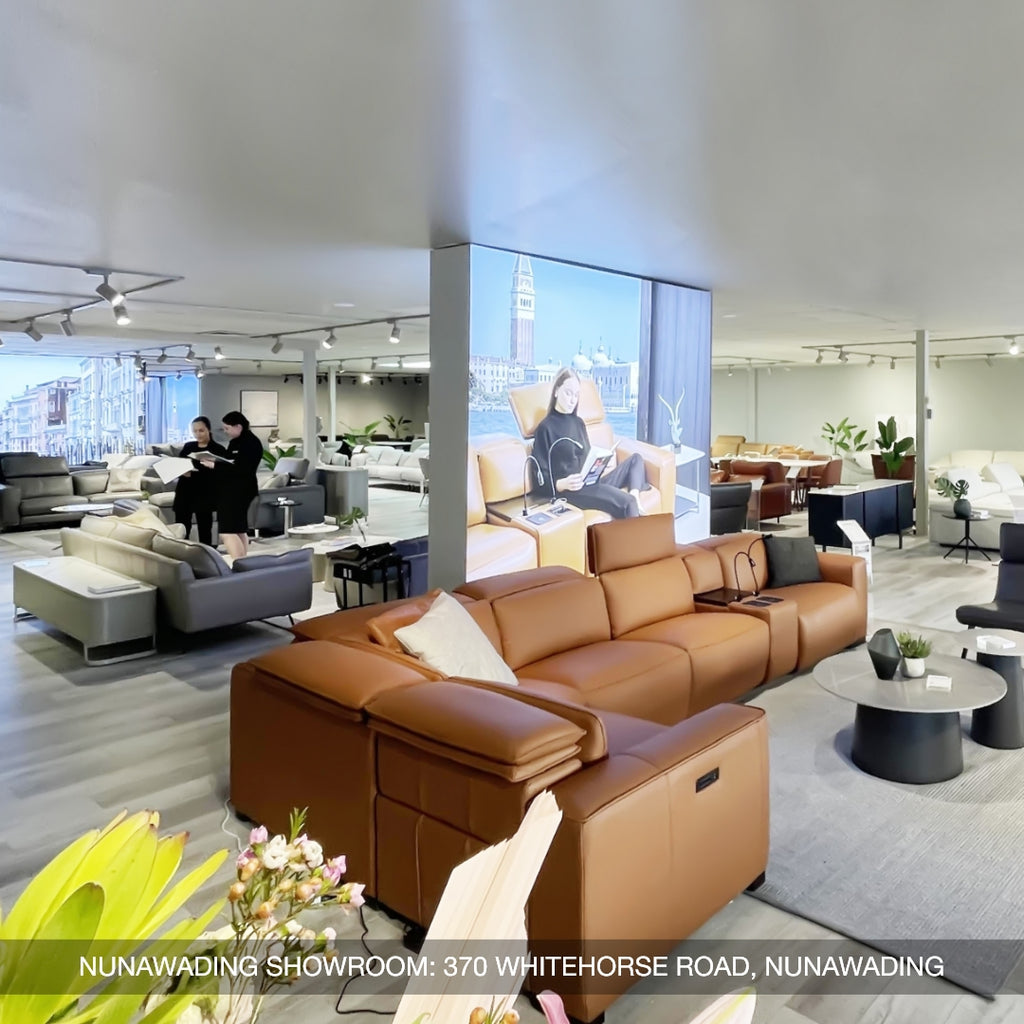The psychology of color in interior design plays a crucial role in shaping our emotions and setting the tone for a space. Sofas, being central pieces in living rooms, offer an excellent opportunity to harness this power. Understanding how colors affect mood in interior design helps in choosing mood-boosting colors for home, turning your sofa into more than just furniture, it becomes an emotional anchor for your space.
Color's Impact on Emotions and Physiology
Color is far more than a visual experience; it has tangible effects on our emotions and even our physiology. Color psychology for rooms has shown that the colors in our environment can influence our feelings, behavior, and physiological responses. At its core, color psychology is the study of how colors affect human behavior, mood, and emotions. It is a powerful tool used by designers and marketers alike to create specific atmospheres and influence perceptions.
Warm Colors: Energy and Excitement
Colors like red, orange, and yellow fall within the "warm" spectrum, and they are typically associated with energy, enthusiasm, and excitement. These colors are often seen in high-energy environments, such as gyms or cafes, because they help stimulate the senses. Warm colors can elevate heart rates and even increase blood pressure, triggering feelings of vitality and engagement. Bold color meaning is particularly evident here, red, for instance, is linked to passion and urgency, while yellow evokes feelings of joy and optimism. In home design, these colors can help create a dynamic atmosphere, particularly in spaces where social interaction and high energy are encouraged, like living rooms or kitchens.
Cool Colors: Calm and Serenity
In contrast, cool colors such as blue, green, and purple are often linked to feelings of calmness, relaxation, and serenity. These colors are widely used in bedrooms and bathrooms to create peaceful, soothing environments. Studies have shown that cool tones can lower heart rates and blood pressure, fostering a tranquil atmosphere that encourages relaxation. Blue is especially popular in interior design for its calming effects, and green, being the color of nature, is known for promoting a sense of balance and harmony.
Universal Associations: A Global Language of Color
A groundbreaking study published in Psychological Science in 2020 surveyed over 4,500 participants from 30 countries and found that certain color associations are universal across cultures. For example, red is commonly associated with danger or alertness, while blue is almost universally seen as calming or peaceful. This finding underscores the idea that the psychology of color in interior design has a universal impact, influencing emotions regardless of cultural background. When choosing bold colors for a sofa, it’s important to consider these universal associations to ensure that your design choices elicit the desired emotional response from all who enter your home.
Children and Color: Nurturing Emotions and Creativity
Colors have a particularly strong impact on children, influencing not only their emotions but also their cognitive development. Research has shown that lighter, brighter colors like yellow and blue stimulate positive emotions in children. Yellow is associated with happiness and creativity, making it ideal for play areas or rooms where children engage in creative activities. Blue, on the other hand, promotes tranquility and focus, which can be helpful in bedrooms or study areas.

Colors have a significant influence on children, shaping both their emotions and cognitive development.
The Emotional Palette: Choosing the Right Sofa Color
Colors are powerful tools that can enhance your mood, reduce stress, and even stimulate creativity. Different hues have unique psychological effects, making them key elements in designing spaces that foster the desired atmosphere. Here, we dive deeper into how different bold sofa colors can affect emotions and set the mood of your space.
Red: The Color of Passion and Energy
Red is often regarded as the color of passion, excitement, and even aggression. It’s a bold and vibrant choice that stimulates the senses, increasing heart rate and blood pressure. As one of the most powerful colors in the spectrum, red can inject a room with energy and drama, making it ideal for social spaces where activity and conversation are key. The psychology of color in interior design shows that red can evoke strong emotions, from intense love to fiery anger, depending on the context and the amount of red used.
- Red is a bold and energetic color that evokes feelings of passion, excitement, and even aggression. As a color that grabs attention, it’s perfect for spaces that require an energetic atmosphere. Red sofas can be paired with neutral or muted walls and furniture to balance their intensity.
- It can add drama and energy to a space, making red the perfect choice for living rooms or entertainment areas where you want to create an engaging and lively environment. A red sofa becomes a conversation starter and the focal point of the room, adding visual interest.
- In an Australian home, a red accent chair could be paired with neutral walls and furniture for a balanced yet striking look. The boldness of the red will add vibrancy, while the neutral tones help to ground the space.
Orange: The Hue of Warmth and Creativity
Orange is a warm, inviting color that promotes feelings of happiness, enthusiasm, and creativity. It is often associated with optimism and innovation, making it a great choice for areas where you want to encourage mental activity and interaction.
- Orange promotes feelings of happiness, enthusiasm, and creativity, making it a perfect choice for spaces designed to inspire and uplift. The warmth of orange creates a sense of openness and joy, which is why it’s often used in creative spaces like studios or brainstorming rooms.
- It can stimulate mental activity and create an inviting atmosphere, particularly in rooms meant for socializing or gatherings. An orange sofa encourages interaction and creates an atmosphere of warmth and inclusion.
- An orange sofa in a sunroom, bathed in natural light, enhances the feeling of warmth and creates a welcoming space. The brightness of the color, combined with the warmth of sunlight, will energize and uplift the mood of anyone who enters the room.
Yellow: The Essence of Joy and Optimism
Yellow is universally recognized as a color that promotes joy, optimism, and intellectual stimulation. It’s often associated with sunshine and happiness, making it ideal for spaces where you want to uplift moods and encourage social interaction.
- Yellow is associated with joy, optimism, and intellectual stimulation, making it a perfect color to incorporate into spaces where lightheartedness and positivity are key. It’s particularly effective in creating an inviting and vibrant atmosphere.
- It can brighten a space and encourage communication, which is why yellow is a common choice in living rooms and dining areas where people gather and converse. Yellow can stimulate the mind and foster a sense of openness.
- Yellow throw pillows or a vibrant piece of artwork can inject cheerfulness into a living room. For a more subtle approach, consider incorporating yellow accents through accessories or decorative items around the room to enhance the overall mood.
Green: The Color of Tranquility and Balance
Green is known for its calming and balancing properties. As the color of nature, green promotes a sense of tranquility and harmony, making it ideal for creating a peaceful environment.
- Green is a calming and refreshing color that evokes feelings of balance, and harmony. It is often used in spaces designed to promote relaxation and mental clarity, such as bedrooms or reading nooks.
- It can reduce stress and promote a sense of well-being, which is why green sofas are commonly found in spaces designed for unwinding. Green helps lower anxiety levels and provides a restful, soothing atmosphere.
- An emerald green sofa amidst natural textures and earthy tones creates a calming oasis in an Australian living room. The rich green hue, paired with natural wood accents and plush textiles, can transport you to a peaceful, nature-inspired retreat.
Blue: The Shade of Calm and Serenity
Blue is universally known for its serene and calming properties. Whether it’s a deep navy or a soft sky blue, this color promotes relaxation and clear thinking, making it an ideal choice for spaces where rest and rejuvenation are needed.
- Blue promotes relaxation, clear thinking, and serenity. It’s often used in spaces meant for sleep or relaxation, such as bedrooms, because it can help reduce stress and encourage restful sleep.
- It can create a peaceful environment by reducing mental clutter and promoting a sense of tranquility. Blue is particularly effective when used in combination with other calming elements like soft lighting or plush fabrics.
- A deep blue sofa in a bedroom can promote restfulness, complemented by soft white bedding and natural wood accents. The combination of blue with natural textures helps create an environment that’s conducive to relaxation and sleep.
Purple: The Hue of Luxury and Creativity
Purple is traditionally associated with luxury, creativity, and spirituality. Its rich, regal tones evoke feelings of mystery and sophistication, making it perfect for adding a touch of elegance to any room.
- Purple is associated with luxury, creativity, and spirituality, making it a great choice for spaces where inspiration and creativity are encouraged. It can also add a sense of grandeur to a room.
- It can evoke a sense of mystery and intrigue, which is why purple is often used in settings where you want to stimulate the imagination, such as home offices or creative spaces.
- A plush purple sofa in a home office can inspire creativity and add a touch of sophistication. When paired with sleek modern furniture, the purple hue enhances the sense of luxury and creativity within the space.

Purple is often linked to luxury, creativity, and spirituality, with its rich and regal tones evoking mystery and sophistication.
Bold Colors in the Australian Context
Australians have long favored neutral tones in their homes, reflecting a preference for subtlety and a desire for spaces that feel open and airy. However, recent years have seen a shift towards bolder color choices, inspired by the natural beauty of the Australian landscape. This transformation is driven by a growing desire to bring the vibrancy of nature into the home while also reflecting individual style and energy.
Embracing the Australian Landscape
Australia's stunning, diverse landscapes from the arid, sun-baked deserts to lush forests and coastal beaches, serve as rich sources of inspiration for interior color palettes. These natural landscapes, with their warm, earthy tones and lush greens, have influenced Australian color trends, creating a shift toward more organic, grounded color schemes.
- Earthy tones and natural textures are leading the charge in Australian interior design, with many homeowners opting for colors and materials that reflect the country’s stunning natural scenery. These tones—such as soft beiges, muted greens, and terracotta—help create a sense of calm, warmth, and connection to the outdoors.
- Colors inspired by the landscape, such as sandy beiges, eucalyptus greens, and warm terracottas, are being incorporated into Australian homes more than ever. These earthy hues, when paired with natural materials like wood and stone, bring the natural beauty of Australia indoors. They also evoke a sense of tranquility and harmony, fostering an environment that feels connected to the landscape.
- When used on a sofa, these landscape-inspired colors can create a grounded and organic feel. For example, an earthy green sofa evokes the calming effect of eucalyptus trees, while a terracotta-colored sofa brings warmth and coziness to the space. Pairing these bold hues with natural textures, like a stone fireplace or a wooden coffee table, creates a truly harmonious living space.
Popular Sofa Colors Down Under
While neutral tones like beige and grey are still widely popular in Australia, the increasing interest in bolder hues reflects a larger trend toward personal expression in home design. Sofas, being central elements in a living room, are a natural focal point for these bold colors.
- While neutrals remain popular, vibrant colors like teal, orange, and green are becoming more sought after for sofas. These bold colors add personality to a space and allow homeowners to make a statement without overwhelming the room. This shift is reflective of a growing desire to create spaces that are not only beautiful but also emotionally engaging.
- Emerald green, navy blue, and terracotta sofas are among the most popular bold options in Australian homes today. These rich, sophisticated hues create striking focal points in living rooms, adding depth and vibrancy to the space. An emerald green sofa, for example, can bring a touch of nature indoors, while a navy blue sofa exudes a sense of elegance and tranquility. Terracotta, with its earthy warmth, has become an increasingly popular choice for creating a welcoming, cozy atmosphere.

Among the most sought-after bold options in Australian homes are emerald green, navy blue, and terracotta sofas.
Bold Colors in Small Spaces: A Surprising Benefit
Many people shy away from using bold colors in small spaces, fearing that they may overwhelm the room. However, bold hues can be an incredibly effective way to enhance the emotional and visual appeal of compact areas. The psychology of color in interior design tells us that bold colors can add depth, create visual interest, and even make a small space feel more expansive.
Creating Visual Interest
Bold colors are particularly effective in smaller rooms, where they can create a sense of space and visual intrigue.
- Bold colors can make a small space feel larger and more dynamic. The use of a bright, vibrant sofa in a small room draws attention and gives the space a focal point, making it feel more expansive and visually appealing. A teal or orange sofa, for example, can serve as a visual anchor, making the room feel more dynamic and less confined.
- A brightly colored sofa can also help define distinct areas in an open-plan living space. In a studio apartment or open living room, a colorful sofa can clearly demarcate the seating area from other functional zones, such as a dining or kitchen space. This helps create a sense of structure and organization, even in a small area.
Minimizing Clutter
In small spaces, clutter can feel overwhelming. Bold colors, however, can serve as a visual tool to minimize the impact of excess items.
- Bold colors can make a home feel calmer by capturing attention and redirecting focus away from clutter. For instance, a bright-colored sofa or armchair can act as a visual anchor, drawing the eye toward it and allowing surrounding clutter to fade into the background.
- Strong colors and patterns naturally attract the eye, which helps in making clutter seem less noticeable. By strategically placing bold, attention-grabbing furniture pieces, such as a sofa in a bright hue, the rest of the room can remain visually calm, making the space feel less chaotic.
Practical Tips for Small Spaces
For smaller rooms, it’s essential to incorporate bold colors without overwhelming the space. With a little strategic planning, bold colors can be introduced in ways that make the space feel fresh, dynamic, and inviting.
- Decorate with colorful accessories like throw pillows, rugs, and artwork to inject bold colors without taking up too much floor space. These smaller pieces of décor allow you to play with color in a more subtle and versatile way.
- Introduce bold colors through smaller furniture pieces like ottomans or accent chairs. These items offer a great opportunity to experiment with bold hues, such as vibrant oranges or greens, without overwhelming the room.
- Incorporate stripes or patterns to create an illusion of expansion by drawing the eye upwards or sideways. A striped sofa or patterned rug can make a small room feel taller or wider, creating a more open and airy effect.

One effective approach is to use colorful accessories such as throw pillows, rugs, or artwork.
Balancing Bold with Neutral: Achieving Harmony
While bold colors are exciting and energizing, achieving balance in interior design is key. A room that’s too saturated with vibrant colors can feel chaotic or overwhelming. This is where the art of combining neutral and bold colors comes into play. Balancing bold hues with neutral tones can create a harmonious and visually appealing environment that feels both dynamic and inviting.
- Use neutral colors for walls, flooring, and larger furniture pieces. By opting for muted tones in these areas, you create a sense of calm that allows your bold-colored sofa to stand out. For example, a white or light grey wall acts as a perfect backdrop to a striking emerald green or navy blue sofa.
- Incorporate bold colors in smaller accents like cushions, throw blankets, and artwork. These touches of color add personality and vibrancy to the room, while still keeping the overall feel balanced and grounded. Choosing sofa color in a bold color can be complemented by neutral cushions and a muted rug, allowing the space to feel harmonious without overwhelming the senses.
- For instance, pair a bold green sofa with "Antique White" or "Whisper White" walls, both of which are popular in Australian homes. These soft, neutral whites create an elegant backdrop, making the green sofa the focal point of the room while ensuring the space remains serene and inviting.
- Metallic accents like gold or copper can serve as a bridge between neutral and bold décor. These reflective finishes add warmth and sophistication, balancing out the contrast between bold sofa colors and the surrounding neutral elements.
In conclusion, bold colors in sofas have the power to elevate the mood and atmosphere of any space, creating environments that are both dynamic and inviting. Understanding the psychology of color in interior design allows you to choose colors that enhance emotions and create the perfect ambiance in your home. Whether you’re exploring modern leather color options or referring to an Italian sofa color selection guide, COZY offers a wide range of high-quality, stylish sofas that cater to every taste. Discover the perfect piece to transform your living space and boost your mood by visiting COZY today.





